PAHOA, Hawaii — The Latest on a Hawaii volcano eruption (all times local):
12:30 p.m.
Officials say they aren’t expecting a possible explosive volcano eruption to be life-threatening as long as people stay out of a surrounding Hawaii national park that’s preparing to close.
Scientists worry Kilauea volcano could soon send boulders and ash shooting out of its summit crater.
No one lives in the immediate area of the summit. It’s within Hawaii Volcanoes National Park, which plans to close Thursday night.
Hawaii Volcano Observatory scientist Tina Neal says communities a mile or two away may be showered by pea-sized fragments or dusted with nontoxic ash.
Active eruption of lava from fissures some 25 miles (40.2 kilometers) east of the summit has paused. However, earthquakes continue and additional fissure outbreaks are expected.
Authorities ordered two subdivisions in the area to evacuate last week.
Workers have removed flammable pentane from a nearby geothermal plant.
———
11 a.m.
Flammable pentane has been moved out of a Hawaii geothermal plant that’s near communities where lava has oozed from cracks in the ground.
Plant manager Mike Kaleikini said Thursday that all the fuel was moved off-site to a secure location.
Hawaii County Managing Director Wil Okabe says the pentane was moved to an industrial park some 30 miles (48 kilometers) away from the Puna Geothermal Venture.
The pant sits on the edge of Leilani Estates, one of the areas where nearly 2,000 residents have been forced to evacuate as Kilauea spewed lava. And with new fissures opening closer to the edge of the plant, residents are getting even more worried.
Scientists say active eruption of lava within the Leilani Estates remains paused. However, earthquake activity and ground deformation continue and additional outbreaks in the general area are expected.
———
10:15 a.m.
Authorities have accelerated the timeline for moving flammable pentane from a Hawaii geothermal plant that’s near communities where lava has oozed from cracks in the ground.
Workers are moving the fuel to an industrial park about 30 miles (48.2 kilometers) away. All 50,000 gallons (189,270 liters) of pentane was expected to be removed by the end of Thursday.
Pentane is a flammable liquid similar to lighter fluid, or butane.
Officials said earlier this week they had planned to move the pentane over the next few weeks but accelerated the effort because of the ongoing lava threat.
The Puna Geothermal Venture is owned by Nevada company Ormat Technologies.
It sits on the edge of Leilani Estates, one of the areas where nearly 2,000 residents have been forced to evacuate as Kilauea continues to spew lava. And with new fissures are opening closer to the edge of the plant, residents are getting even more worried.
———
Hawaii volcano could spew boulders the size of refrigerators
PAHOA, Hawaii — If Hawaii’s Kilauea volcano blows its top in the coming days or weeks, as experts fear, it could hurl ash and boulders the size of refrigerators miles into the air, shutting down airline traffic and endangering lives in all directions, scientists said Thursday.
“If it goes up, it will come down,” said Charles Mandeville, volcano hazards coordinator for the U.S. Geological Survey. “You don’t want to be underneath anything that weighs 10 tons when it’s coming out at 120 mph.”
The volcano, which has been spitting and sputtering lava for a week, has destroyed more than two dozen homes and threatened a geothermal plant. The added threat of an explosive eruption could ground planes at one of the Big Island’s two major airports and pose other dangers. The national park around the volcano announced that it would close because of the risks.
“We know the volcano is capable of doing this,” Mandeville said, citing similar explosions at Kilauea in 1925, 1790 and four other times in the last few thousand years. “We know it is a distinct possibility.”
He would not estimate the likelihood of such an explosion, but said the internal volcanic conditions are changing in a way that could lead to a blast in about a week. The volcano’s internal plumbing could still prevent an explosion.
A summit blast could also release steam and sulfur dioxide gas.
Kilauea has destroyed 36 structures — including 26 homes — since May 3, when it began releasing lava from vents about 25 miles (40 kilometers) east of the summit crater. Fifteen of the vents are now spread through the Leilani Estates and neighboring Lanipuna Gardens neighborhoods.
Hawaii Gov. David Ige said crews at a geothermal energy plant near the lava outbreak were accelerating the removal of stored flammable gas as a precaution. The Puna Geothermal Venture plant has about 50,000 gallons (189,270 liters) of pentane. The fuel was expected to be removed by the end of Thursday.
It would be “very, very hazardous” if a volcanic vent opened under the facility where the fuel is stored, the governor said.
About 2,000 people have been evacuated from the neighborhoods were lava has oozed from the ground.
No one lives in the immediate area of the summit crater, the crater and surrounding region are a part of Hawaii Volcanoes National Park, which planned to close Friday.
“It seems pretty safe to me right now, but they’d know best,” said Cindy Woodd, who was visiting from British Columbia, Canada. “We don’t know what’s going on underground. Life and safety is what’s most important.”
What could happen is not an eruption of volcanic gases but mostly trapped steam from flash-heated groundwater released like in a kitchen pressure cooker, with rocks, said volcanologist Janine Krippner of Concord University in West Virginia.
The problem is the lava lake at the summit of Kilauea is draining fast, about 6.5 feet (2 meters) per hour, Mandeville said.
In little more than a week, the top of the lava lake has gone from spilling over the crater to almost 970 feet (295 meters) below the surface as of Thursday morning, Mandeville said. The lava levels in the lake are dropping because lava is spewing out of cracks elsewhere in the mountain, lowering the pressure that filled the lava lake.
“This is a huge change. This is three football fields going down,” Mandeville said.
The fear is that it will go below the underground water table — another 1,000 feet further down — and that would trigger a chain of events that could lead to a “very violent” steam explosion, Mandeville said.
At the current rate of change, that is about six or seven days away.
Once the lava drops, rocks that had been superheated could fall into the lava tube. And once the lava drops below the water table, water hits rocks that are as hot as almost 2,200 degrees (1,200 degrees Celsius) and flashes into steam. When the water hits the lava, it also steams. And the dropped rocks hold that steam in until it blows.
A similar 1924 explosion threw pulverized rock, ash and steam as high as 5.4 miles into the sky, (9 kilometers) for a couple of weeks. If it happens again, the danger zone could extend about 3 miles (5 kilometers) around the volcano, Mandeville said.
———
Borenstein reported from Washington, D.C. Associated Press writers Audrey McAvoy, Caleb Jones, Haven Daley and Jennifer Sinco Kelleher contributed to this report.
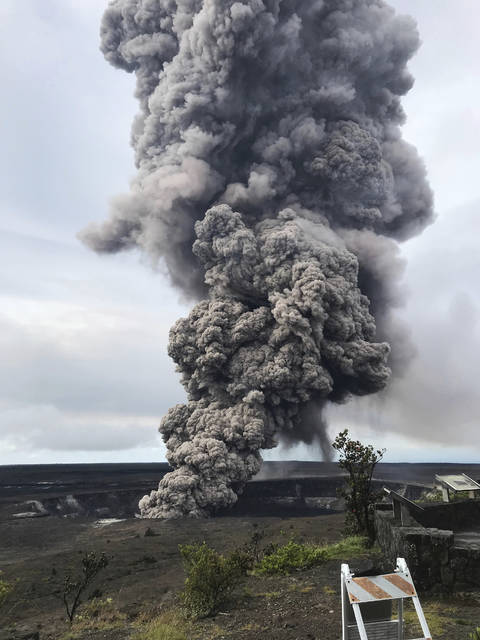
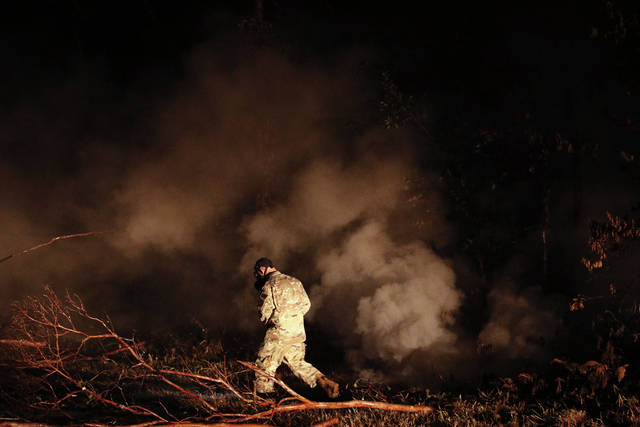
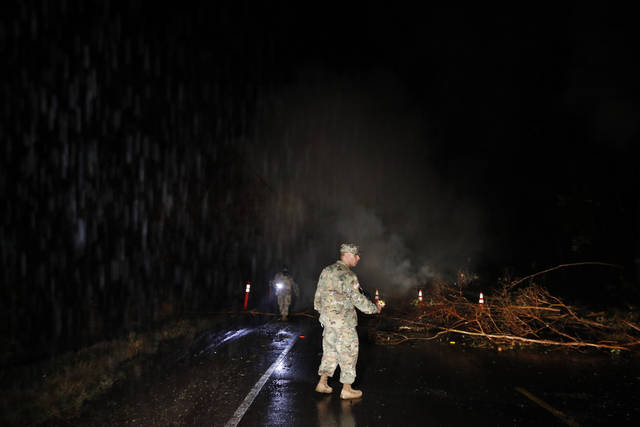
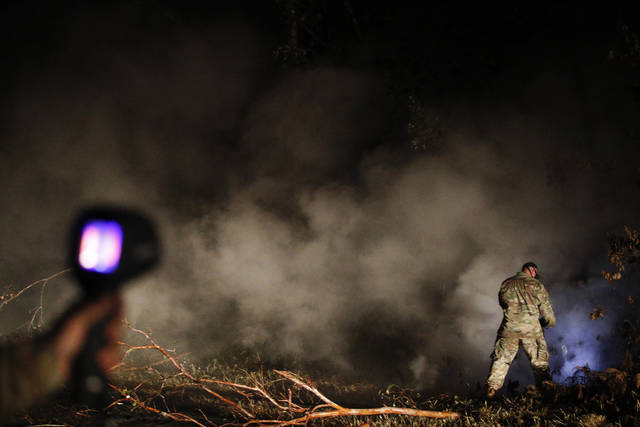
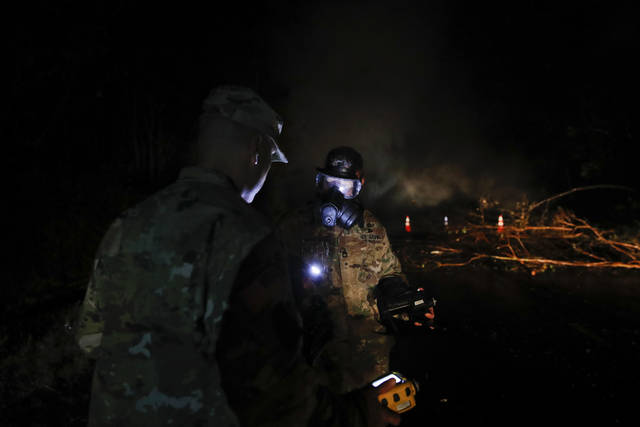
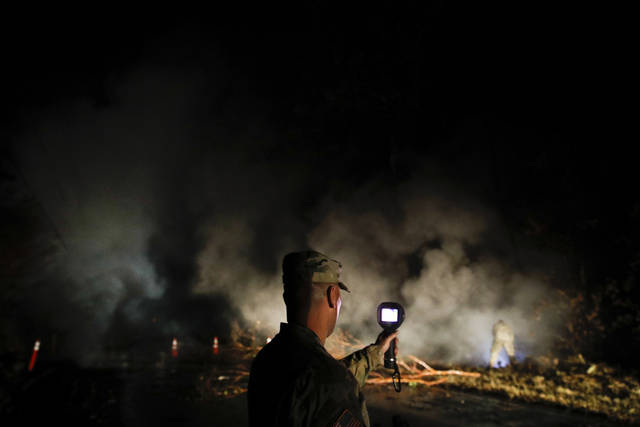






A violent steam (water table intrusion) would result in an early fireworks display hurling 10 ton projectiles miles high in the air and falling down . What a sight to behold
You noticed how the National Guard officer, Lt. stands way back while ordering the enlisted Sgt forward, into the hazard to take readings. Unfortunately that’s how it works in today’s “modern” military service and the reason why there is so much disparity amongst the injured and dead between enlisted and officers. No more evident like in the past when it was required for leaders to lead the charge, but now lead from behind in a safe environment.
Does David Ige have any plans on the recovery process? The lava might get too close to a gas station tank. If it does, you’ll have a chain of explosions around the island. Sulfur dioxide and the gas, the whole island is a poisonous gas chamber.